📈 Welcome to the 55 new subscribers! Now at 977 subscribers, almost at the magical 1.000 subs barrier!
Beachhead market series
➡️ Today: What makes a great beachhead market?
🗓️ Planned: Five expansion strategies from your beachhead market
🗓️ Planned: Getting traction in your beachhead market
🗓️ Planned: Performance-based beachhead: lessons from the steam engine
Finding your first customer is important, obviously. Ideally, the needs of that first customer are not unique and there are many customers like that first one.
Being thoughtful about your first customer segment, a so-called beachhead market, can improve the chance of getting mainstream traction.
I went through 20+ blog posts, books, articles, and chapters on beachhead markets. Most of them repeat the same abstract ideas without actionable insights. Therefore, I’m writing a series on beachhead markets.
Today, I cover the fundamentals and show you what to look out for in your beachhead market.
What is a beachhead market?
Simply put, a beachhead market is a niche market. A mainstream market is the big, mass market. You could launch your product in the entire mainstream market.
It’s what Apple does with the release of every new iPhone. For startups that are still figuring out their product, that might be a risky strategy.
So, instead of chucking spaghetti at a big mainstream market, you could identify a niche segment. From here you can start and approach the entire market in waves.

This is called having a beachhead market in your to-market strategy. It is a stepping stone towards the mainstream market.
“Trying to get to the mainstream market without a beachhead market is like trying to light a fire without kindle” - Paraphrased from George A. Moore
Example: Tesla’s beachhead market strategy
Tesla had a to-market strategy with a clear beachhead market. It was conquering the entire car market, but it didn’t start with a mainstream car. Tesla started with the Tesla Roadster.
There were a few reasons for that. Initial electrical car technology was quite expensive, so making a mainstream car for $50k was not an option. This makes sense (at least in hindsight).
What is one of the benefits of an electric motor? Acceleration. What segment really likes the fast acceleration that an electric motor gives you? Fancy sports cars. In which customer segment doesn’t price matter that much? Fancy sports cars.
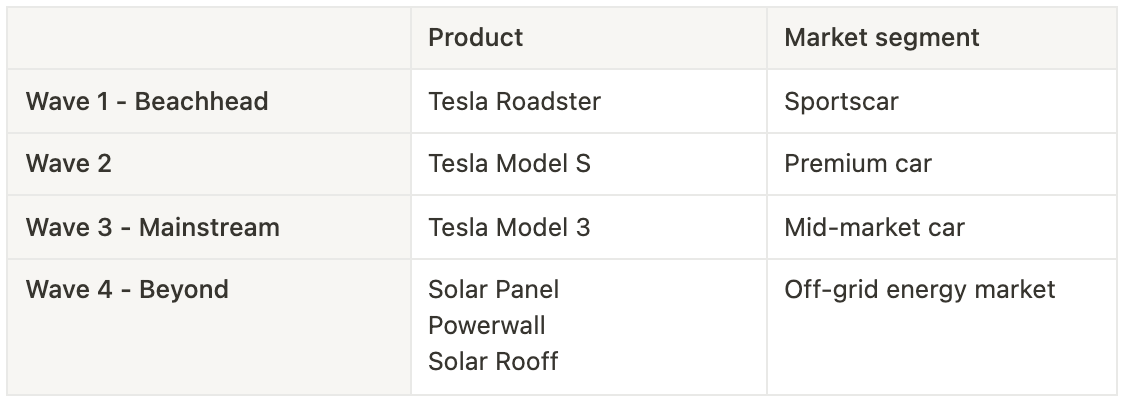
Tesla’s initial segment was the sports car segment served by the Roadster, launched in 2008. From there, they launched the Model S in 2012, a cheaper but still relatively expensive sedan. In 2017, they launched a more accessible Model 3. Guess where Elon borrowed those names from?
Beyond the mainstream market
After landing in these market segments, Tesla went beyond the mainstream car market. They ventured into the off-grid energy market, creating home batteries and two types of solar panels.
They drew on their existing expertise in batteries and electricity. This was relatively close to their core business, yet still impressive from a strategic perspective.
Is Tesla really mainstream?
One can argue whether the Model 3 actually is mainstream or whether it is still too expensive for most folks. Fair point. The average new car price in the US was $48K in 2022 and the starting price of a Model 3 is $43K (without any subsidies).
What makes a mainstream market, anyway? Most iPhones are high-end but have mainstream adoption. Concepts like mainstream market and beachhead market have vague boundaries. My point is not to highlight the boundaries.
The insight here is a waved product strategy to serve a variety of segments with at the start a clear niche beachchead market. Tesla sold about 2500 Roadsters. Only in 2022, Tesla sold 240.000 Model 3s. Mainstream market versus beachhead market.
Why is it called a beachhead market?
You know I love a little history side tour. Why is it called beachhead market?
Below you see operation Overlord. The beach landings initiated the Allied invasion of German-occupied France. The Allies eventually arrived in Berlin (behind the Soviets), but the first steps were taken in France, specifically in Normandy. This answers the question: What is the best way in?
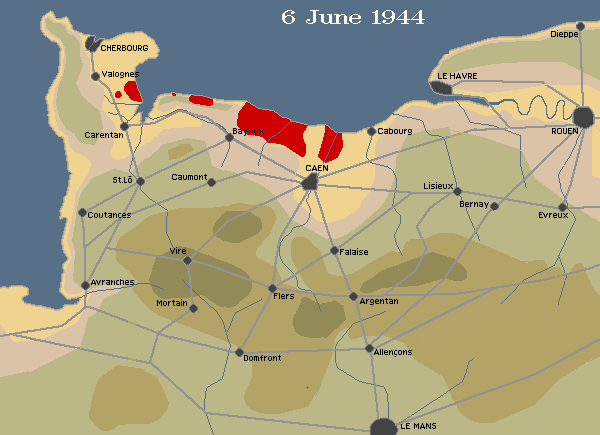
The Germans expected the allies to start the invasion at Calais. The canal is at its narrowest at Calais, making it an ideal crossing point, or so they thought. The allies played into this by launching diversion operations set up around Calais to confuse the Germans.
However, historians claim that Calais never really was a great landing place, due to the heavy protection by the Germans and the tougher, hilly environment.
By surprise, they landed on a different set of beaches. Here, they positioned a line of military equipment, made of boats and cannons. This line defended the arriving reinforcements and allowed them to launch an attack land inward. What is the name of such a lined position? A beachhead.
What makes a good beachhead market?
The term beachhead market was coined by the same person that created the graph that you see below, George A. Moore. A graph that you might have seen before.
There’s an early market and a mainstream market. In between sits the chasm. Crossing that chasm is hard. Moore dictates that a beachhead market is what you need to cross the chasm and conquer the mainstream market. What makes a good beachhead market?
A good beachhead market might want your product, a great beachhead market actually wants your product
Your early market should have a very urgent problem/need (level 5 of customer problem-fit). High urgency of problem-solving, could hint at needing your product.
However, they must want to see it solved in a novel way. This attraction to novelty is very important for a beachhead market. Mainstream people are not so drawn to novelty, they play it safe.
There are two archetypes of people you should look out for if you want to identify your first, beachhead market customers: innovators and visionaries.
Innovators want new stuff
They want the newest (tech) stuff, and are more engineery
They love your product and are very interested in how it works and therefore are willing to try longer to make it work (because your first version is not perfect)
Want to see your solution work because they have this enthusiasm about technology. They will happily be in your passenger seat as a launching customer, to be a part of this.
Can be focused on the technology itself, not always on performance in relation to the problem. Think about all these NFT/blockchain boys. No problems are being solved there. But a great starting point, nonetheless.
Visionaries want breakthrough performance
Are looking for breakthrough performance compared to existing solutions
Tend to be more businessy/pragmatic. You could have all the support of five engineers, but the manager decides if he buys your SaaS.
Willing to take risks with you, Energized by novelty
Easy to sell, hard to please
Love pilot projects to prove your concepts: “let’s do this”
Will communicate with their peers about the visionary potential, in your passenger seat looking at your dashboard and looking at the future
Beware of the picky mainstream market
Above are the two archetypes of people to look out for. Who of your customer interviews had this eagerness to work with you? Beware of people that hate risk. Because that might be mainstreamers.
If a mainstreamer settles for a new solution, they want to stick to that new solution for a while. Innovators and visionaries switch more easily, the mainstream market doesn’t.
They want quality products, your MVP can’t break down
They are not in your passenger seat next to you, they are in the passenger seats behind you, ready to be served like a customer
Where visionaries hate the limitations of the current competition, mainstream likes existing competition, because it allows them to compare. In this way, they can derisk the purchase
Ultimately, they are looking for a good price. Innovators and Visionaries are willing to spend a little extra at the start. The mainstream market doesn’t give you this luxury.
Who are your innovators and visionaries?
Identifying your beachhead market comes down to asking the question: who are your innovators and visionaries? When doing customer interviews, you will find some people that are just so eager to get your product.
The answer to this question is not an abstract persona. In the early days, you should have a concrete answer: “Oh our innovators are like Sarah and Yashar, and our visionaries are like Ricky and Raja”, people you have actually spoken to.
This goes beyond customer interviews. You need to traverse the desirability scale to pilots & sales. The difference between a potential customer and a customer is the difference between a customer interview and a sale (or pilot).
Also, you should be able to tell whos not your customer. Who’s too mainstream, saying no to pilots? Bob. Don’t spend your time with Bob. Try to land more Sarahs, Yashars, Rickies and Rajas. These people will help you to grow your startup.
What do your innovators and visionaries have in common?
If you have a couple of those, try to deeply understand them. Ask yourself, what do these people have in common, besides being very eager to work with you? For the Tesla Roadster, it could’ve been that people already owned 2 cars and wanted a new toy. You can leverage insights like these in finding new people to sell to.
Example: I’m currently selling my mentoring services. What is my beachhead market here? I’m already seeing patterns in who’s buying my service. It’s professionals with adjacent work experience that discovered an opportunity and are consciously aware they need help.
Where can I find more of these people? Startup solo workplaces like WeWork, online communities? It’s not a perfect segment yet, but by doing the legwork of trying to sell you will learn who’s eager to work with you.
There’s no shortcut. It requires grit and perseverance. You will get many nos. Nobody said doing a startup was easy. Get in the trenches and good luck!
How was this one?
Great - Good - Meh
Need help finding your beachhead market?
I will help you to identify your innovators and visionaries. You can read about my way of working and some testimonials.
I’ve got two spots left for the coming months. Ooooh, that urgency. Do you feel it?

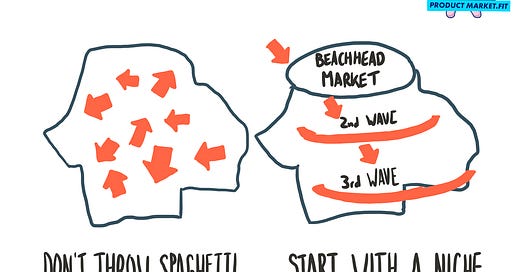



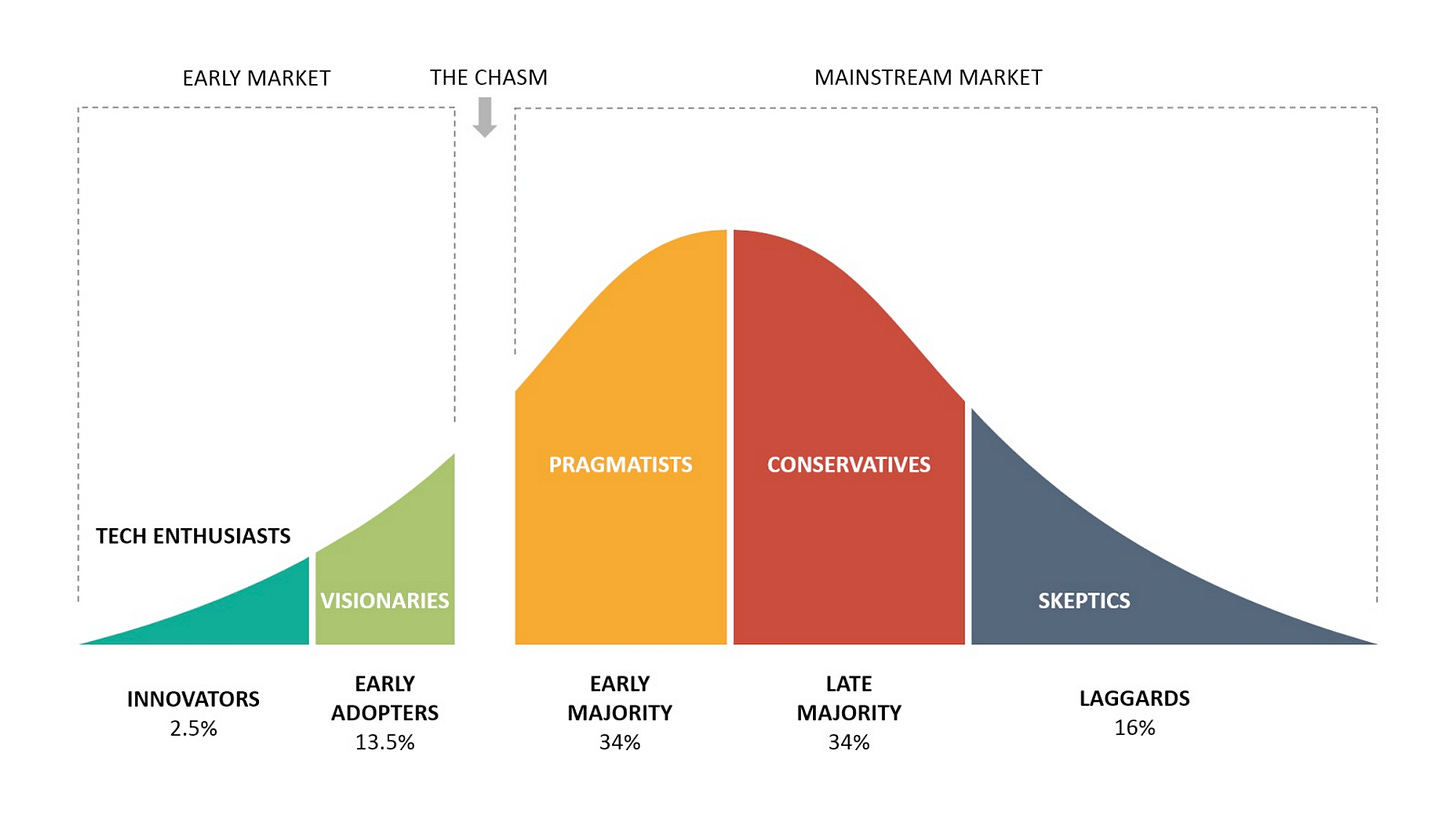


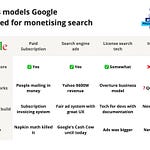
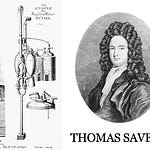


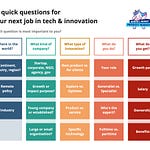

Share this post